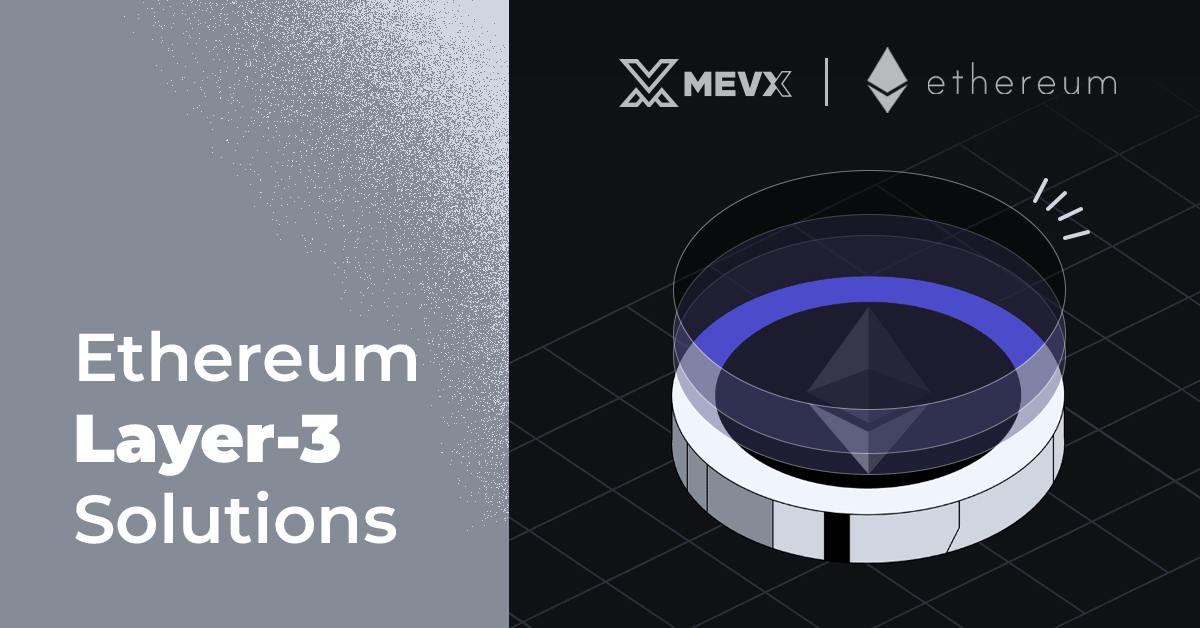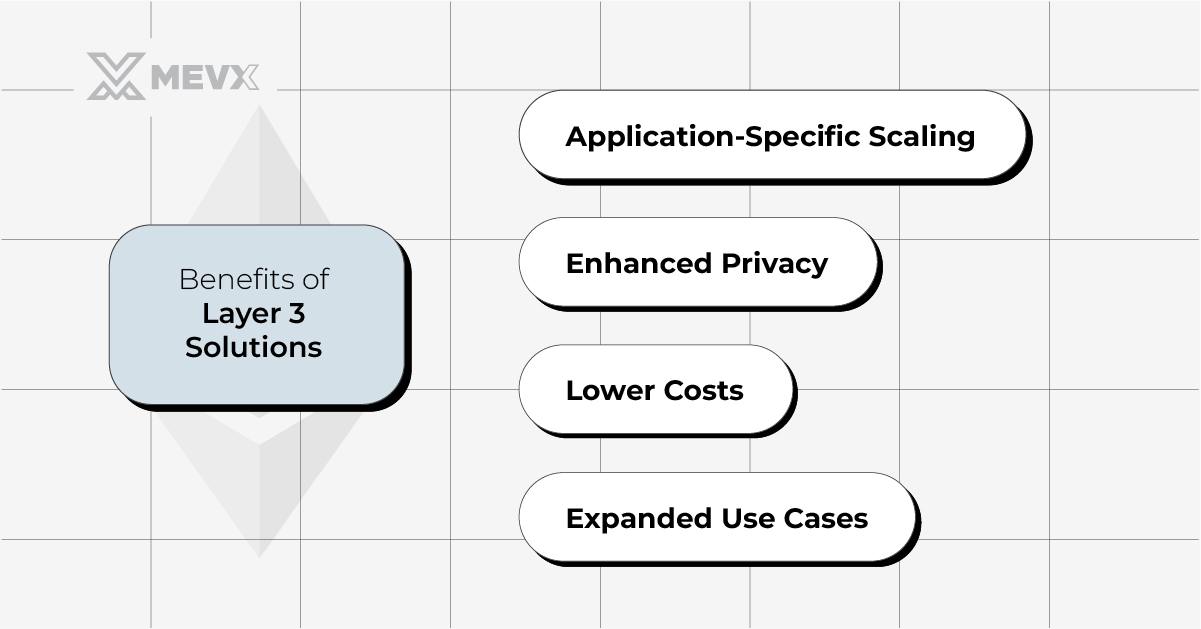Blockchain technology has come a long way from its early days with Bitcoin. Ethereum, known for its smart contracts and decentralized applications (DApps), remains at the forefront of innovation. While Layer-2 (L2) solutions have addressed issues like scalability and transaction fees, the spotlight is now shifting to Layer-3 (L3) solutions. These promise to bring even greater customization, efficiency, and accessibility to the blockchain ecosystem. This guide explains what Layer-3 solutions are, how they work, their benefits, and their potential to shape the future of blockchain.
What Are Layer-3 Solutions?
To understand Layer-3 (L3) solutions, let’s first look at the foundational layers of blockchain:

Layer 1 (L1): The Core Blockchain
- Examples: Bitcoin, Ethereum.
- Provides security, decentralization, and the foundation for transaction processing.
- Issues: Limited scalability and high transaction fees during periods of congestion.
Layer 2 (L2): Scaling Solutions
- Built on top of L1 to solve scalability issues.
- Examples: Arbitrum, Optimism, Polygon.
- Methods: Process transactions off-chain or compress data to reduce the load on L1.
Layer-3 (L3) solutions take it a step further. While L2 improves scalability for all applications, L3 focuses on specific needs, providing tailored solutions for individual DApps or industries. It’s like adding a custom toolkit to a machine that’s already optimized for speed.
How Do Layer-3 Solutions Work?
Layer-3 solutions add an extra layer of customization and efficiency to blockchain architecture. Here’s how they work in a simplified manner:
Layer 2 as the Base for Scaling:
- L2 reduces transaction fees and speeds up processing by offloading some work from L1.
- Example: Arbitrum processes thousands of transactions, bundles them, and submits a summary to L1.
Layer 3 Adds Specific Features:
- L3 builds on top of L2, focusing on the unique needs of individual applications.
- Example: A gaming DApp may require lightning-fast in-game transactions, while a healthcare app may prioritize secure data privacy.
Optimized Execution:
- By isolating tasks specific to a DApp, L3 solutions improve performance and reduce costs further.
- Example: Validium, a type of L3 solution, processes data off-chain but relies on validators to ensure security, enabling higher throughput.
Key Features of Layer-3 Solutions
Application-Specific Scaling:
- L3 solutions are designed to optimize performance for specific use cases rather than providing a one-size-fits-all solution.
- Example: A decentralized exchange (DEX) can use L3 for faster order matching, while a supply chain app can focus on real-time tracking.
Enhanced Privacy:
- Many L3 solutions use Zero-Knowledge (ZK) proofs, which verify transactions without exposing sensitive details.
- This is critical for industries like finance and healthcare that handle private data.
Cost Reduction: By tailoring execution, L3 solutions lower transaction costs even further than L2, making blockchain more affordable for both developers and users.
Expanded Use Cases: L3 solutions unlock new possibilities by addressing the unique requirements of industries such as gaming, supply chain, finance, and healthcare.
How Layer-3 Solutions are Different from Layer-2
| Feature | Layer 2 (L2) | Layer 3 (L3) |
|---|---|---|
| Focus | General scalability for all applications. | Customization for specific applications. |
| Privacy | Basic privacy features. | Advanced privacy using ZK technology. |
| Optimization | Broad optimizations for the network. | Tailored optimizations for each DApp. |
| Cost Reduction | Significant fee reductions for transactions. | Further cost reductions for targeted tasks. |
Real-World Example: How L3 Works
Let’s look at Validium, a type of L3 solution, to understand its functionality:
What Validium Does: Validium processes transactions off-chain and only relies on the blockchain for validation, avoiding congestion on L1.
How It Works: Instead of storing compressed transaction data on L1, Validium uses validators to ensure data integrity. This significantly improves speed and reduces costs.
Benefits: A DApp using Validium can handle thousands of transactions per second at minimal fees, making it suitable for applications requiring high throughput, like gaming or social media.
Benefits of Layer-3 Solutions

Custom Performance Optimization: Applications can be tailored for their unique requirements, ensuring maximum efficiency.
Improved Privacy: L3 solutions often use Zero-Knowledge technology, making transactions secure and private.
Lower Costs: By isolating tasks and streamlining execution, L3 solutions further reduce fees compared to L2.
Unlocking New Use Cases: Industries like gaming, supply chain, and healthcare can adopt blockchain more easily with the tailored solutions offered by L3.
Challenges Facing Layer-3 Adoption
Despite their potential, Layer-3 solutions face some hurdles:
Lack of Standardization: There isn’t yet a unified framework for building L3 solutions, which complicates development.
Early Development Stage: As a new technology, L3 solutions are still being tested for long-term scalability and real-world viability.
Complexity of ZK Technology: Zero-Knowledge technology is powerful but still evolving. It needs further refinement to make it more efficient and widely accessible.
The Future of Layer-3 Solutions
Layer-3 solutions are expected to play a crucial role in the evolution of blockchain technology:
Cost Optimization: As blockchain becomes more accessible, L3 solutions will lower barriers to entry for developers and businesses.
Industry-Specific Applications: L3 enables the creation of tailored solutions for finance, gaming, healthcare, and other sectors.
Mainstream Adoption: By improving usability, privacy, and scalability, L3 solutions bring blockchain closer to widespread adoption in daily life.
As the Web3 ecosystem continues to refine technologies like ZK proofs and work towards standardized frameworks, the potential of Layer-3 solutions will grow exponentially.
Layer-3 solutions are a significant leap forward in blockchain technology, enabling a more customizable, scalable, and cost-effective future. By building on the foundation of Layer-1 and the efficiency of Layer-2, L3 solutions unlock new possibilities for decentralized applications and industries.
Although challenges remain, the continued advancement of ZK technology and the collaborative efforts of the Web3 community promise a bright future for L3 solutions. They have the potential to revolutionize blockchain, making it more accessible, private, and adaptable for everyone.
